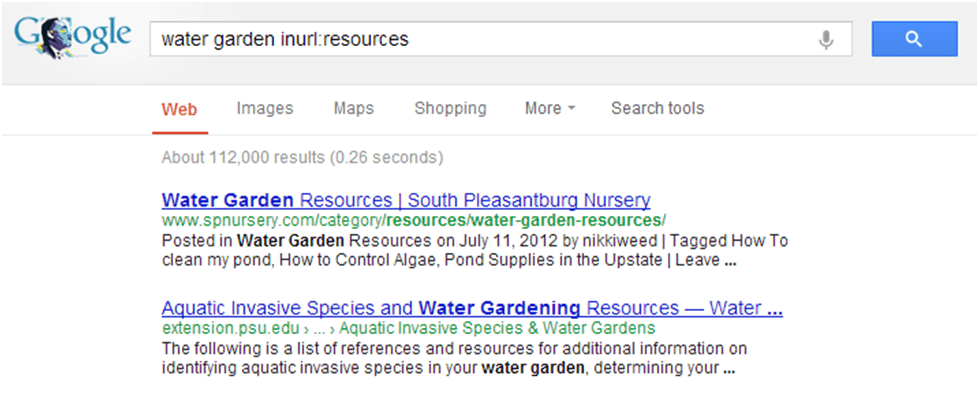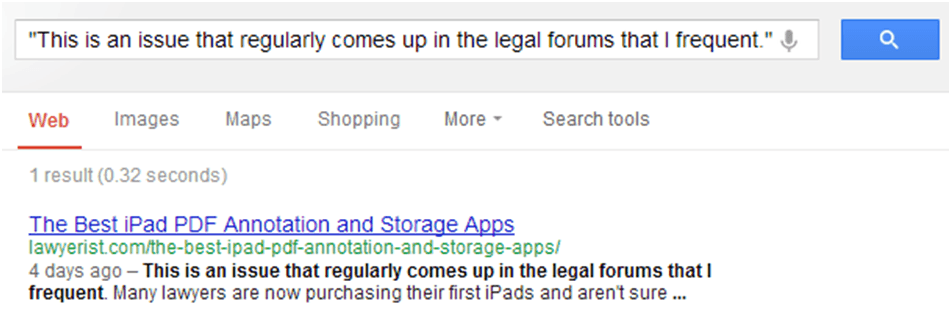(and No, “Content Marketing” Isn’t One of Them)
Link building is a problem. And it’s more of a problem now than ever, because it requires real humans with real brains in their heads, having real ideas, and really implementing those ideas. The days of submitting to a few directories, getting a few paid links, dropping some comment links, and then ranking for the keywords you’re targeting are gone. Of course, as agencies, we still need to deliver results for our clients, and stay within their budget. So how do we do that?
In a recent interview with Jon Cooper, Jon gives a realistic answer to a question about safeguarding against a link penalty from Google:
How do you safeguard your link-building efforts from possible Penguin penalties?
Don’t leave a footprint. Penalties detect patterns. If you don’t have one, no matter what might seem “black hat” or “against Google guidelines,” they really can’t get you for anything.
This begs the question: How do we ensure that our link building isn’t leaving a nasty footprint that will leave the site open to manual or filter link penalties, while still practicing techniques that can be scaled? I have some answers!
Here are three link building tactics that our team uses in-tandem to ensure that we are producing results within budget, and that we are avoiding those big ugly link footprints.
Broken Link Building
What it is:
The idea here is simple, and most SEJ readers have almost certainly read about this tactic. Essentially what we are doing is:
First: Finding pages on the Web that link to sites like ours.
Second: Finding broken links on those pages.
Third: Telling the webmaster about the broken links (because we are good-hearted people with no self interest whatsoever).
Last: Kindly suggesting that a link to our site be added to the page because our content is relevant and their users will find it endlessly useful.
How to scale it:
Much has been written on scaling broken link building by some great link builders like Paddy Moogan, Kristi Hines, and Anthony Nelson, but here, I want to talk about it from the perspective of a strategist directing a team on this process—my perspective. Here is what I would do to ensure that the broken link building my team is doing is as efficient as possible:
1. Determine the niche you want to target.
I have a client who sells Flexible PVC Pipes, and one of the varieties of pipes he sells are pond tubing, which can be used for maintenance of water gardens. Guess what? There are TONS of sites and forums where people who freakin’ love water gardens hang out. Let’s get links there.
2. Determine search queries to find pages linking to other pages in those niches:


3. Have your team record those pages, and track the opportunities using Buzzstream.
4. Perform outreach using a template created in Buzzstream.
This process is repeatable, effective, and requires little to no creativity or thought from the link builder. In other words, this is a great way to scale broken link building.
Guest Posting (Yes, Guest Posting)
What it is:
You know the drill:
- Write a cool/interesting/funny/useful blog post, and get someone else to post it on their blog.
- Drop a link to your site in the post.
How to scale it:
Guest posting is still a good way to get a link, despite what Matt Cutts says about Google cracking down on it. As with all link building tactics, if you’re focusing on targeting site’s that people actually read, and not crap article dump sites, you’ll get some fine links. Here is how my team scales guest posting:
1. Link builders are a lazy breed—take advantage of that.
Lord knows if a process can be automated, a link builder will automate it. So why would a link builder writing guest posts all day, every day bother switching up his author byline?
2. Evaluate the link profile of a competitor who is doing good guest post link building.
Using your link profiler of choice, search a competitor and find his best guest post link.
3. Get the byline.
When you find a good one, copy his byline:

4. Google search the byline.
Slap some parenthesis around it, and search it:

5. Shazam! Guest post opportunities … lots of them!

6. Write and Outreach.
There are a number of tools you can use to scale outreach. Some recommendations are Buzzstream (not free), Tout App for GMail (free), and Boomerang for GMail (free). All of these tools allow you to essentially create templates and send messages at the optimum time. Here are a couple of my favorite posts on good outreach:
- http://www.paddymoogan.com/2012/07/12/guest-blogging-link-building-using-buzzstream/
- http://www.seomoz.org/blog/throw-away-your-form-letters-or-5-principles-to-better-outreach-link-building
*The byline idea is Paddy Moogan’s from Mozcon 2012.
Comment Marketing
How to do it:
Disclaimer: This tactic will by no means push your site over the top for any highly competitive keywords, as most of these links will be no-followed. The idea is to drop links to your site in front of already engaged audiences, and give insightful contributions which establish you as an authority among those audiences. Any ranking benefit from dropping links (which I personally have seen time and time again) is a bonus.
Mr. Fishkin has a good Whiteboard Friday expanding more on the extent of the value of this type of marketing, but here I am talking about its value in terms of being a scalable link building method.
I have found that a lot of clients are quite interested (perhaps too interested) in seeing reports that show that a whole bunch of links are being built (I guess, as a metric to justify their investment…). Comment marketing is a great way to get lots of links quickly. The concept is simple:
- Read a blog post.
- React to that post in the form of a comment.
- Drop a link in the “Website” or “URL” field.
Despite the fact that most comment links are marked as no-follow, I have personally seen evidence time after time that these links actually do pass some sort of ranking influence. Best of all, they are quick, free, and scalable.
How to scale it:
1. Perform a simple Google search like “top [vertical] blogs.”

2. Check out one of the already compiled lists (which you will almost certainly find for most verticals) like this one.
3. Collect the URLs of 20 or so of these blogs. These blogs should have the following properties:
- They should accept comments (just check out some individual posts and ensure that some of them have comments posted).
- They should have a field to drop a link.
Example:

- They should allow comments to be indexed.
To check this, just copy a chunk of text from a comment on a given post, throw it in parenthesis, and Google search it.
Grab a sentence:

Search it:

If the site appears, you’re good to go.
4. Throw those URLs in a spreadsheet, and drop a comment on 1 post from each per day. In a month or so, you have 20 new links, from 20 domains, plus you have put your site in front of thousands of readers who are already interested in topics related to your business.
Anyone who has ever been expected to achieve link building wins in 2013, while working within a tight budget, will understand that the ability to scale link building efforts without leaving a big, ugly, dangerous link footprint is critical. Hopefully these tips will help you do just that.
At this time, I ask that you please do some comment marketing, and give me your two cents in the comments section below.
Author Bio: Matt is a SEO Strategist with Ethical SEO Consulting. He LOVES building links, like the one he dropped in this very author bio. If you want to get a hold of Matt for any non-criminal reason, you can contact him through his blog, DM him on Twitter @MChuckGreen, or chat him up on Google+.
Featured Image Credit: Shutterstock / -AnnA-




